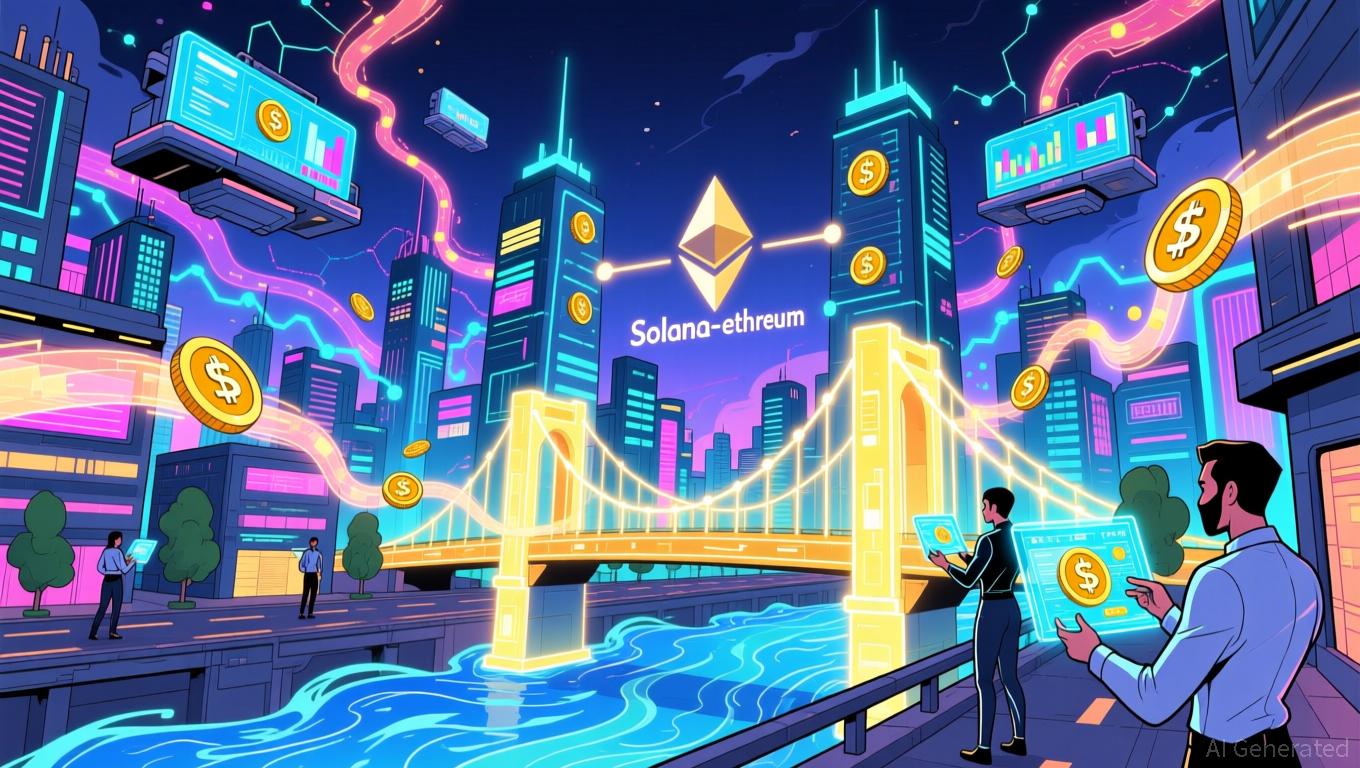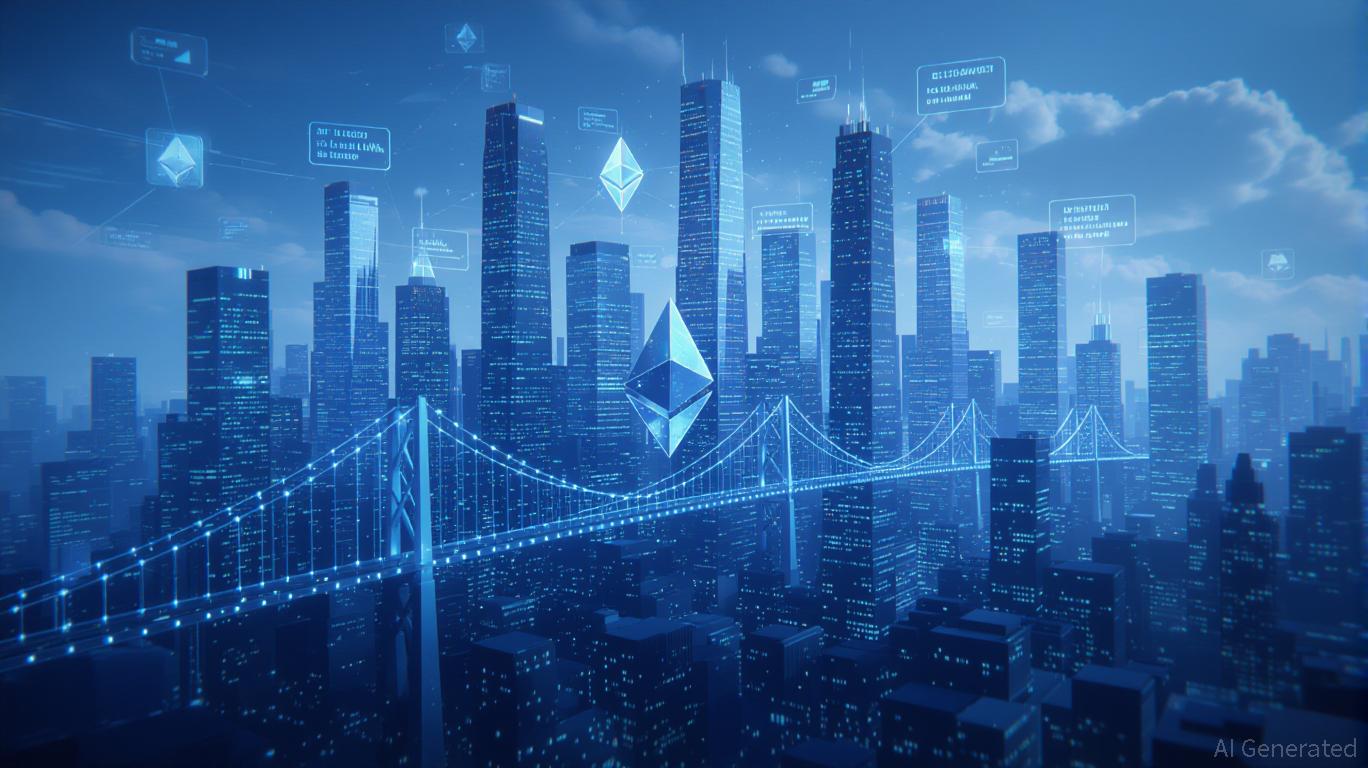USD1 puts users at the center with innovative rewards, reshaping how stablecoins are embraced in the DeFi landscape
- World Liberty Financial (WLFI) distributed 8.4 million tokens to USD1 stablecoin users via its Points Program, aiming to boost adoption and DeFi utility. - The initiative generated $500M in trading volume across six exchanges, with USD1 now ranking as the sixth-largest stablecoin at $2.98B market cap. - Future plans include Apple Pay-compatible debit cards and real-world asset tokenization, despite regulatory challenges and competition from USDT/USDC.
World Liberty Financial (WLFI) has revealed it will distribute 8.4 million
The token distribution, which will occur in multiple stages, benefits users who have actively traded USD1 pairs or maintained balances on partner platforms such as KuCoin, Gate.

The USD1 Points Program has already generated substantial momentum for the stablecoin, which now stands as the world’s sixth-largest stablecoin with a market cap of $2.98 billion, according to
This airdrop also reflects growing institutional interest in USD1. Earlier this year, Abu Dhabi-based MGX investment group used USD1 to complete a $2 billion investment on Binance, a milestone for the stablecoin, according to
Experts see the rewards initiative as a calculated effort to strengthen USD1’s position in the market. The $500 million surge in just two months points to robust user engagement, especially on exchanges like Gate.io and KuCoin, where USD1 trading activity has increased sharply. Nonetheless, the project still faces hurdles, such as regulatory concerns over reserve transparency and rivalry from established stablecoins like
Disclaimer: The content of this article solely reflects the author's opinion and does not represent the platform in any capacity. This article is not intended to serve as a reference for making investment decisions.
You may also like
Bitcoin Updates: Bitcoin Faces 23.6 Fib Level—Could Past Trends Spark an Altcoin Recovery?
- Bitcoin dominance fell to 59% at the 23.6 Fibonacci level, signaling potential altcoin rotation amid ETF outflows and price declines. - Corporate Bitcoin accumulation grows, with Hyperscale Data holding $70.5M in Bitcoin (77% of market cap) and Bitfarms holding $156M in Bitcoin. - Analysts highlight macroeconomic pressures and regulatory uncertainty as constraints on altcoin growth despite technical indicators suggesting capital rotation. - Market focus remains on Bitcoin stabilization above $80,000 and

Interoperability Fuels DeFi’s Evolution as Hemi and LI.Fi Connect Blockchains
- Hemi and LI.Fi expanded crosschain interoperability by integrating LI.Fi's bridge and swap API, enabling seamless token transfers across EVM and non-EVM networks like Solana . - Users can now transfer assets like USDC between chains in single transactions using routing tools, reducing friction for DeFi participants and developers. - The partnership standardizes crosschain workflows, eliminating fragmented bridge solutions while supporting liquidity aggregation across EVM, Solana, and alt-VMs. - By stream

Vitalik Buterin's Latest Support for ZK Technology and What It Means for the Cryptocurrency Industry
- Vitalik Buterin is driving a blockchain shift via ZK tech, enhancing Ethereum's scalability and privacy. - ZK infrastructure's $28B TVL surge highlights projects like zkSync Era and StarkNet boosting DeFi and gaming. - Investors target EVM-compatible ZK rollups and privacy toolkits, aligning with Ethereum's ZK roadmap.

XRP News Today: IMF Cautions That Tokenized Markets Could Face Collapse Without International Cooperation
- IMF warns tokenized markets risk destabilizing flash crashes due to rapid growth and interconnected smart contracts. - XRP highlighted as potential cross-border payment solution but not endorsed, alongside Stellar and Bitcoin-Lightning hybrid models. - Global regulators intensify oversight of tokenized assets, with ESMA, SEC, and central banks addressing governance and liquidity risks. - IMF stresses urgent need for coordinated policy frameworks to prevent fragmentation and systemic vulnerabilities in ev
